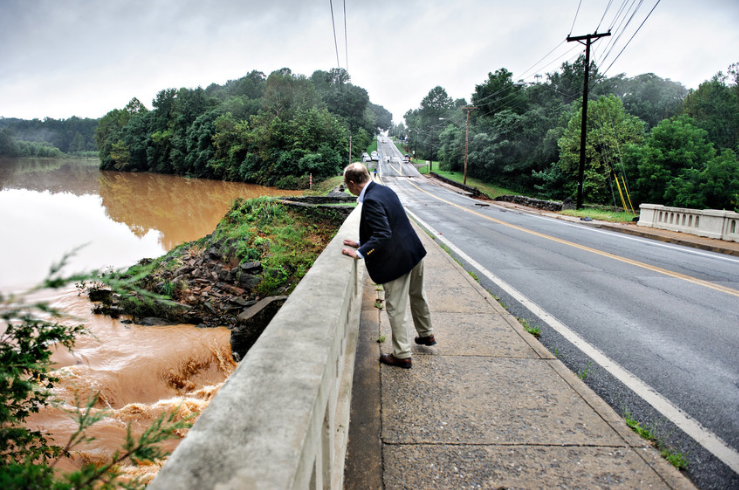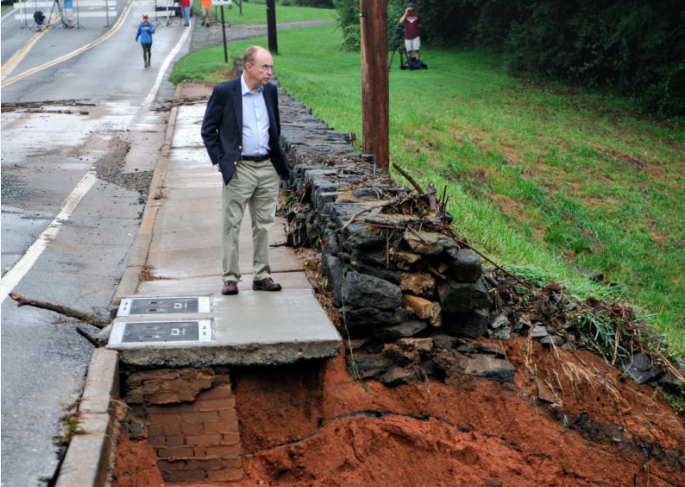Engineering firm AECOM is conducting a Preliminary Engineering Report (PER) to evaluate the best options for removing College Lake Dam and restoring the lakebed. The PER and design phase of the dam removal project are expected to take approximately 18 months.
During a flooding event in August 2018, College Lake Dam, which is owned by the university, suffered extensive structural damage resulting in the evacuation of approximately 150 residents who live downstream. Afterward, the City of Lynchburg and the University of Lynchburg worked closely with experts to make temporary repairs and install real-time monitoring equipment to reduce the risk of future emergencies. However, the dam remains a hazard and must be removed.
“We are excited to begin the design phase of this critical project. Over the next several months, we will work to create a shared vision for the removal of a high-hazard dam and restoration of Blackwater Creek in a way that will allow the community to enjoy this ecological and recreationally rich area,” said Lynchburg Deputy City Manager Reid Wodicka. “This is an excellent opportunity to improve public safety and showcase water quality improvements in our urban environment.”
“We look forward to the opportunity for our faculty and students to help create this world-class wetland learning laboratory,” added University President Dr. Kenneth Garren. “We also envision a public-private partnership with the City that will serve as a model for other communities addressing aging dams.”
In the coming weeks, AECOM scientists and engineers will study sediment and collect ecological data in the project area.
After the dam is removed, teams will work to restore the lake bed into a healthy habitat with a creek and wetlands. During the process, University of Lynchburg students will have opportunities to take part in studies and environmental testing. Long term, they will use the area as an outdoor laboratory for studying the environment.
Over the next two years while the dam removal project is designed, the city plans to build a bridge to replace the roadway over the dam so traffic interruption will be minimal.
The city built the dam in 1934, forming a lake on the Lynchburg College campus. For many years, Lynchburg students and nearby residents used the lake for swimming, canoeing, fishing, and ice skating.


The flood in August, 2018 damaged the dam, making it clear that removing the dam would be the most sustainable, long-term solution. Kenneth R. Garren, president of the University of Lynchburg, was on site early the next morning to survey the damage. Photos by John McCormick.